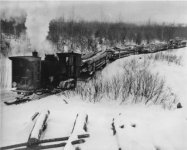pianoman8t8
Hot Rolled
- Joined
- Nov 14, 2012
- Location
- Maine, USA
Hi guys,
Prepare for a long-winded post...
A couple questions here. More-so on derived values for the gear shape rather than the machining itself. I'm looking to reproduce some very old planetary gears for a good-sized rear differential. Let me give you some context: I was given values from Mark's Engineering Handbook, started drawing it in Solidworks to these dimensions, and some things weren't adding up. So I was double checking using the Machinery's Handbook, and this is when I discovered the discrepancies between the 2 references.
Also worth noting: a note here that these formulas (from Mark's) are based upon Gleason bevel-gear system which employs a basic pressure angle of 20 degrees. so maybe the formulas are slightly different for 14-1/2 degree pressure angle? not sure.
Also note: The Machinery's Handbook doesn't explicitly say (on the table) what pressure angle these formulas are geared towards (pun intended). The only reference I could find referring to pressure angle before or after the table is in regard to selecting a formed cutter. "For milling 14.5deg pressure angle bevel gears,..." But there is no reference to the table of formulas.
You'll also note the extra dimension in parenthesis in the root angle. This is per the note at the beginning of the table: "The formulas for milled bevel gears should be modified to make clearance at the bottom of the teeth uniform instead of tapering toward the vertex. If this recommendation is followed, then the cutting angle (root angle) should be determined by subtracting the addendum angle from the pitch cone angle instead of subtracting the dedendum angle as in the formula given in the table."
Prepare for a long-winded post...
A couple questions here. More-so on derived values for the gear shape rather than the machining itself. I'm looking to reproduce some very old planetary gears for a good-sized rear differential. Let me give you some context: I was given values from Mark's Engineering Handbook, started drawing it in Solidworks to these dimensions, and some things weren't adding up. So I was double checking using the Machinery's Handbook, and this is when I discovered the discrepancies between the 2 references.
Also worth noting: a note here that these formulas (from Mark's) are based upon Gleason bevel-gear system which employs a basic pressure angle of 20 degrees. so maybe the formulas are slightly different for 14-1/2 degree pressure angle? not sure.
Also note: The Machinery's Handbook doesn't explicitly say (on the table) what pressure angle these formulas are geared towards (pun intended). The only reference I could find referring to pressure angle before or after the table is in regard to selecting a formed cutter. "For milling 14.5deg pressure angle bevel gears,..." But there is no reference to the table of formulas.
You'll also note the extra dimension in parenthesis in the root angle. This is per the note at the beginning of the table: "The formulas for milled bevel gears should be modified to make clearance at the bottom of the teeth uniform instead of tapering toward the vertex. If this recommendation is followed, then the cutting angle (root angle) should be determined by subtracting the addendum angle from the pitch cone angle instead of subtracting the dedendum angle as in the formula given in the table."




